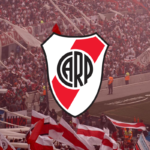


Believe it or not, three days in Santiago de Chile is enough time to experience the city beyond its main tourist attractions and go local. As a traveler, we often have to work with a time constraint, do some research and find out how many days we ought to spend in each city. Three is the magic number for Santiago de Chile to truly unravel the capital’s beauty.
Bellavista
Bellavista is likely where you’ll want to spend much of your time. Cobblestone roads, graffiti-adorned walls and an abundance of al fresco dining spots makes this a tourist’s dream. Your best bet is to allow yourself a few hours to simply wander the charming neighborhood and enjoy the atmosphere. When you get hungry for lunch, Calle Constitución is lined with charming restaurants where you can try the Chilean staple, ceviche, or lomo a lo pobre, (a beef tenderloin topped off with a fried egg and French fries.)
Patio Bellavista is a shopping and dining complex located in the heart of the neighborhood. As a relatively new construction, it doesn’t have the quaint feeling of the rest of the area, but it does have lots of swanky options and a cool vibe. It would be best to grab dinner elsewhere and then stopping by Patio Bellavista for a drink later in the evening.
The famous Chilean poet Pablo Neruda loved Bellavista’s charm so much that he built a house here where his affairs could go on undetected. He aptly named the home La Chascona after his mistress’s wildly curly hair. However, if you plan to spend some time in Valparaiso, I suggest you skip this one and check out Isla Negra instead.
Cerro san Cristóbal
After you explore Bellavista, make your way to Plaza Caupolican, where you will take the funicular to the top of Cerro San Cristobal. At the top you’ll find a 14-meter-high statue of the Virgin Mary and panoramic views of the entire city. The hill hosts a system of cable cars and funiculars, but if you feel like walking, it’s a great place to do some light trekking. There are also two public pools on the hill– check out Piscina Tupahue for a little R&R.
Walking Tour
Today you’re going to put your legs to work and check out the city’s many plazas and neighborhoods. Depending on where you’re staying, you may want to modify the route, but be sure to hit these main attractions.
Starting at Plaza de las Armas, stroll the massive square shaded by over a hundred palm trees and crowded with locals, tourists, clowns and street vendors. The plaza is flanked by the central post office, the city’s largest cathedral and the National History Museum.
Next you’ll be heading Southwest, straight into the Barrio Cívico, home to all of the main government buildings. Plaza Constitución is the site of the Palacio de la Moneda, which houses the country’s presidential offices. You’ll recognize it by the many, many Chilean flags waving proudly on the lawn. Behind it is Plaza Ciudadania, which shows off the facade of the palace.
After checking out the plaza, head East on Avenida O’Higgins (often referred to as Alameda). This main vein of the city will give you a decent picture of urban life in Chile, and leads straight to the next stop: Cerro Santa Lucía.
You’ll know you’ve reached it when you see a massive marble fountain at the base of a large lush hill. After admiring its beauty, trek up to the top of the hill, where landscaped paths lead to a lookout tower providing a sweeping view of downtown Santiago.
Coming down the other side of Cerro Santa Lucía, you’ll end your self-guided tour in Santiago’s historic quarter, which is really just one street: Calle Lastarria. Now would be a good time to reward yourself with a glass of wine or pisco sour. Hey, it’s 5 o’clock somewhere, right?
Barrio Brasil
Depending on your pace, you’ll likely have time to check out another part of the city before dinner. There are several neighborhoods that don’t boast many attractions but paint a nice picture of residential life in Santiago. Located on the west side of town, Barrio Brasil is one of them. Though it offers nothing special in particular, it’s a nice place to stroll and get a feel for the real Santiago. If you want to check it out, you can take the metro from Santa Lucía to República and meander north toward Plaza Brasil.
Providencia
Day three is time to pick and choose what interests you in the city that you haven’t done yet. Shopping? Art? Museums? There are a multitude of options, and you can spend your day doing a combination of any.
But before we get to that, I recommend taking some time in the morning to stroll Santiago’s Parque de las Esculturas. This free, public green space is an open-air museum containing sculptures created by Chilean artists. It’s a nice spot to wander if the weather’s nice, and if you’re up for it, a good place for a picnic lunch.
The park is just due North of the upscale neighborhood of Providencia, so that is the logical next stop. Like Barrio Brasil, Providencia doesn’t boast many attractions or activities, but is a great place to wine and dine.
Santiago de Chile is not known for its museums, but if you’ve had enough meandering and prefer a little A/C, the city does have several quality museums. Check out the Museo de Bellas Artes (Museum of Fine Arts), Museo de Artes Contemporáneo (Museum of Contemporary Art) or the Museo Histórico Nacional (National History Museum).
For those who’ve had enough cultural enlightenment for the day, head back to Bellavista or over to Las Condes to drop some cash at the city’s best shopping spots.
Santiago de Chile is home to many wonderful hotels, from small boutique hotels to luxurious chains. The average price for a room for a 4-start hotel will cost about $60 US dollars. One of the most central neighborhoods is Lastarria. The prices for a room might be a bit more expensive than in the other neighborhoods but it is the center for cultural activities, and you are close to many restaurants and bars. If you are looking for more of a budget-friendly accommodation, you should consider staying in the more artistic neighborhood Barrio Brasil or la Providencia which is a more residential area.
A note about paying: if you can bring US dollars, I’d suggest doing so. Many accommodations in Chile impose a 19% tax if you pay in Chilean Pesos or with a credit card. The only way to sidestep the tax is to pay in US dollars. Go figure.
(US) 910 795 2992
(AR) +54 9 11 —- —-
©Copyright 2025 Landingpadba, LLC